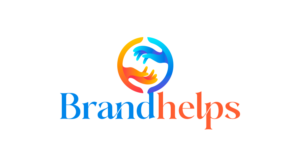Conquering the Burnout Beast in 2025: A Thriving at Work Manual
Burnout is an unpredictable problem that comes without notice and drains productivity and motivation. With 2025’s AI capabilities, the demand for hybrid work, and constant productivity targets, burnout is being faced by more employees than ever before. But don’t worry! Based on my own brushes with burnout alongside my research, I attempt to identify how overworking contributes to this problem and, moreover, how you go about reigniting the fire. Are you eager to get the burnout monster under control? In that case, let’s get started!
Reasons Behind Increased Burnout in 2025
Work-related stress is a growing monster and is at its peak. In a survey conducted in mid-2025, 66% of workers in the United States reported some level of burnout, the most affected being the younger crowd, with 81% of people aged 18 to 24 impacted. The reason? Increased workload, poorly defined work hours, and the competition to understand AI’s daily application. When working a full-time job alongside a side hustle, responding to emails at midnight was my way of showing commitment. What helps? With hybrid work setups, there’s frequently the expectation of being “always on,” which makes disconnecting difficult.
The Overwork Trap: More Hours, Less Output
Putting in hours at work does not guarantee productivity. There is a paradox whereby employees get distracted for a total of 2.9 hours every day (social media being a prime culprit) and still feel obliged to extend their working hours. This leads to fatigue and cynicism. There was a time in my life when meeting deadlines was of utmost importance, and I did everything in my power to achieve them. This snowballed into me working 60-hour weeks, which ultimately culminated in copious amounts of fix work due to not hitting quality benchmarks. Tools like the data on average working hours in 2024 Controlio app can help track your time—check out how many hours you really put in. It dramatically shifted my output and mood in the process, and all I did was work in focused 40-hour weeks.
Spotting the Signs of Burnout
Chronic stress is often accompanied by emotional and physical symptoms. Burnout sneaks up on you and often comes with feelings of emotional exhaustion, detachment, and a sense of ineffectiveness. Alongside these, physical manifestations like headaches or insomnia can surface suddenly. I personally underwent a transformation wherein I became instantly annoyed at colleagues and began hating things I previously looked forward to. If you notice you’re always tired, cynical, or struggling to concentrate, take a breather. 83% of younger workers report burnout at some point during their career, most commonly stemming from excessive self-proving exertion, and we’re looking at Gen Z here. Sound familiar? Chances are you’re not alone.
Breaking the Cycle: Practical Fixes
The nice thing about burnout is that recovery can be achieved with deliberate, small measures. Here’s how:
- Have defined boundaries: Create a cut-off time for work. Like I did, begin by putting your phone on mute after 6 p.m. It’s like winning back your evenings.
- Take short breaks: walks or stretching for 5 minutes improves concentration. A 2024 survey showed that employees skipping breaks are 1.7 times more likely to experience burnout.
- Make use of paid time off: Using PTO is not very popular, as only 33% of workers utilize their vacation time. Personally, I took a week off last year, and it fully recharged my batteries, providing fresh ideas.
- Talk it out: Discussing challenges with colleagues or friends is important. Weekly team check-ins for me became an opportunity to channel frustration and think constructively.
Flex time, mental health resources, and clearly defined goals also make it easier to alleviate stress. Companies prioritizing employee well-being see a productivity increase of over 20%.
Employers: Step Up or Lose Talent
Burnout isn’t unique. It has, unfortunately, developed into a widespread corporate disease. Unmotivated employees singlehandedly cost employers approximately $438 billion every year in productivity loss. By 2025, 45% of burnt-out employees will actively seek new employment, with 34% taking pay cuts for better mental health. I have a friend who left a well-paying, high-pressure tech job for a less stressful role. He hasn’t looked back since. Autonomy must be respected; leaders need to cut down on needless meetings and prioritize well-being. Interested in work-hour data? Balance work-life hours can be gauged using the yrs and hrs calculator.
Conclusion: Your Path to a Healthier Work Life
The burnout challenge persists in 2025, with chronic overwork as the key driver. However, you have abundant means to push back. Set boundaries, take well-deserved breaks, and track your time using the Controlio app. My experience with burnout taught me that, in many cases, less hustle has greater impact. Employers, here’s the catch: if you want to retain talent, prioritize their well-being. Whether you lead teams or contribute as an employee, simple steps can reduce burnout. Take a deep breath, log out of that inbox, and cultivate a work life you don’t just survive in, but truly thrive in.

